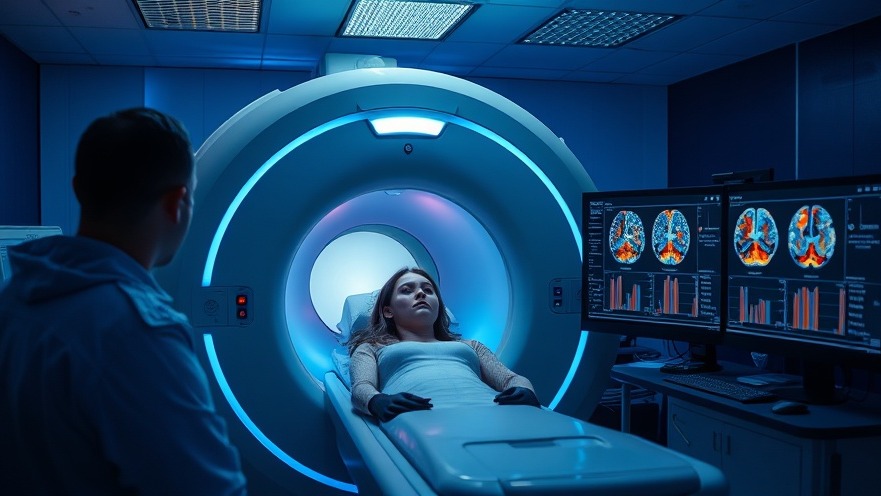
The Pain No One Could See
What if the pain in your back, neck, or knees had more to do with your memories than your muscles?
For millions living with chronic pain, the usual tests come back clean.
There’s no broken bone, no torn tissue—just lingering discomfort that defies explanation.
But emerging research is shedding light on something groundbreaking: your brain may be holding onto pain long after your body has healed.
Dr. Howard Schubiner, a physician who’s helped thousands using mind-body approaches, says this shift in thinking offers hope:
“The pain is not in your head—but it is in your brain. And that’s good news, because the brain can change.”
This article explores the science behind that change.
Through stories, insights, and real-world breakthroughs, we’ll take a deeper look at how emotional healing and nervous system retraining are helping people finally find relief.
Whether you’re a skeptic, a sufferer, or just curious—what you’ll discover might shift the way you think about pain forever.
When the Brain Learns Pain: Understanding the Mind-Body Connection
Foundational Background: Where Science Meets Suffering
Dr. Howard Schubiner never expected his medical career to lead him into neuroscience, psychology, and trauma.
Trained as a traditional internist, he followed the typical protocol: treat pain with medication, refer patients out when needed, and rely on imaging tests to guide treatment.
But over time, he noticed a gap. His patients weren’t getting better, even when their scans looked perfect.
“Again and again, I’d see patients in real distress—people who couldn’t work, couldn’t sleep, couldn’t enjoy life,” Dr. Schubiner said. “And yet their scans were clean. Their labs were normal.”
That insight led him to the mind-body research of Dr. John Sarno, and ultimately to his own model called Mind Body Syndrome (MBS)—a framework that acknowledges how emotional repression and neural wiring can create very real pain.

Turning Points: From Mystery Pain to Measurable Relief
One major breakthrough in the field came with brain imaging studies using fMRI. These revealed something unexpected:
Patients with chronic pain showed activity not just in the sensory parts of the brain, but in emotional centers tied to fear and memory.
This discovery helped prove what many patients instinctively knew—that their pain wasn’t just about the body, but also the brain’s interpretation of threat.
“We worked on journaling, on releasing emotions I didn’t even know I’d buried,” said Julie, a long-time pain sufferer whose symptoms improved dramatically after addressing unresolved grief.
Her story mirrors findings from clinical trials on Pain Reprocessing Therapy (PRT), one of which showed that two-thirds of participants became pain-free or nearly pain-free after just four weeks.
Real Relief: Stories That Inspire
Take Mark, a 42-year-old construction worker with chronic back pain. After a minor injury, the pain stuck around far longer than it should have—despite physical therapy, medication, and rest.
“I thought my life was over,” he said. “I couldn’t work, I couldn’t sleep—I felt broken.”
His turnaround came when he began exploring his emotional history, including trauma from childhood. He also learned a technique called somatic tracking, which helped him feel safer during pain episodes.
“It didn’t disappear overnight, but I could finally move without panicking,” he shared. “That was the breakthrough.”
Serena, a teacher, used expressive writing and mindfulness to manage chronic migraines.
“My pain became less mysterious and more manageable. I stopped blaming my body and started listening to it,” she explained.
These personal stories highlight a recurring theme: healing began not with stronger meds—but with deeper awareness.
Core Insights and Innovations: How the Brain Rewires Pain
The foundation of this healing model is neuroplasticity—the brain’s ability to change its wiring.
When pain persists, it often becomes a learned pattern reinforced by fear. But that pattern can be interrupted and reshaped.
“The brain creates pain to protect us. But it can go overboard,” explained Dr. Schubiner.
To help people reverse these patterns, Schubiner and others use four main tools:
Education about how pain is generated in the brain
Somatic tracking to neutralize fear
Emotional expression to unburden hidden stress
Re-engagement with normal movement
Hospitals like HSS in New York are also teaching these methods through short workshops like Empowered Relief, helping patients reframe pain and regain confidence.
The Science in Simple Terms
Pain acts like an alarm—but sometimes, that alarm gets stuck in the "on" position.
This phenomenon, called central sensitization, occurs when the brain becomes overly sensitive and keeps signaling pain long after healing.
“This is not ‘just in your head,’” explains Dr. Tor Wager, a cognitive neuroscientist. “It’s a physical change in the brain’s pathways that can be reversed.”
That reversal happens by gradually reducing fear and re-establishing safety. Through repetition and reassurance, the brain begins to interpret signals differently.

Unique Value: What Sets Mind-Body Healing Apart
This approach differs from conventional pain treatment in one key way—it puts you in the driver’s seat.
Instead of relying solely on medication or procedures, mind-body work teaches people how to change their relationship with pain.
“It’s not about ignoring the pain,” said Schubiner. “It’s about changing your relationship with it.”
That shift—from fear to curiosity—can be incredibly empowering.
Tools like the Curable App, JournalSpeak, and somatic coaching sessions allow people to heal at home, on their schedule.
Practical Takeaways: How to Start Healing Today
You don’t need to wait for a specialist to begin exploring the mind-body approach. Here are five simple things you can try:
Notice emotional triggers – Does your pain increase with stress, conflict, or criticism?
Practice somatic tracking – Describe your pain like a reporter: sharp, dull, buzzing? Where is it?
Write to release – Don’t filter. Write what you’re truly feeling, especially if it’s uncomfortable.
Visualize movement – Mentally rehearse doing something pain-free. The brain will start to believe it.
Seek connection – Join communities, read success stories, or find a therapist familiar with MBS or PRT.

Bonus Tips for Exploring Mind-Body Healing
Try breathwork: Use box breathing to calm your nervous system (inhale 4, hold 4, exhale 4, hold 4).
Use mirror therapy: Watching your reflection can help retrain the brain to interpret movement as safe.
Repeat affirmations: “I am safe. My body is healing.” Reinforce it daily.
Join online groups: Explore forums like TMS Wiki or the Curable Community.
Keep a mind-body journal: Track how emotions and symptoms interact.
FAQ: What People Want to Know
Is this the same as saying pain is all in my head? No. The pain is real. It’s the source—the brain—that may need retraining.
But my MRI shows a disc bulge—how is that not the cause? Many people with disc bulges have no pain at all. Structure doesn’t always equal symptom.
How long does this take to work? Some feel better in weeks. For others, it’s gradual. The process depends on your consistency and belief.
Should I stop physical therapy or medication? No need to drop other treatments—this can work alongside your current plan. Many eventually reduce other therapies naturally.
A Closing Reflection: Pain as a Messenger
Emma, a mother of three, lived with chronic pelvic pain for years.
Her turning point came when she stopped resisting her symptoms and started listening to their message.
“I stopped fighting the pain and started listening to it,” she said.
Her journey wasn’t perfect—but it was real.
For Emma, and so many others, pain became less of a curse and more of a teacher.
This isn’t about pretending pain isn’t there—it’s about no longer being afraid of it.
And that’s where real healing begins.

The Takeaway: Healing Starts with Understanding
Chronic pain is no longer a mystery we have to live with.
Modern neuroscience is showing us that pain is changeable—because the brain is changeable.
“Once we stop fearing the pain,” says Dr. Schubiner, “we take away its power.”
That idea is helping thousands break free.
If you’ve been stuck in a cycle of frustration, fear, and flare-ups—know this:
You’re not broken. And your body still knows how to heal.
Take the first step. Write. Reflect. Explore.
The relief you’ve been seeking might start with something as simple as understanding your story in a new way.
 Add Row
Add Row  Add
Add 




 Add Row
Add Row  Add
Add
Write A Comment